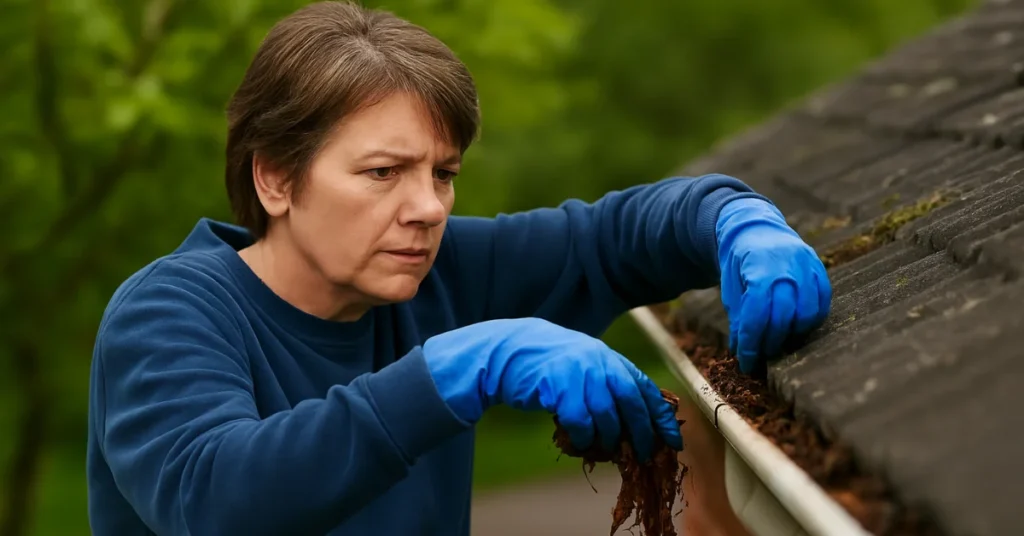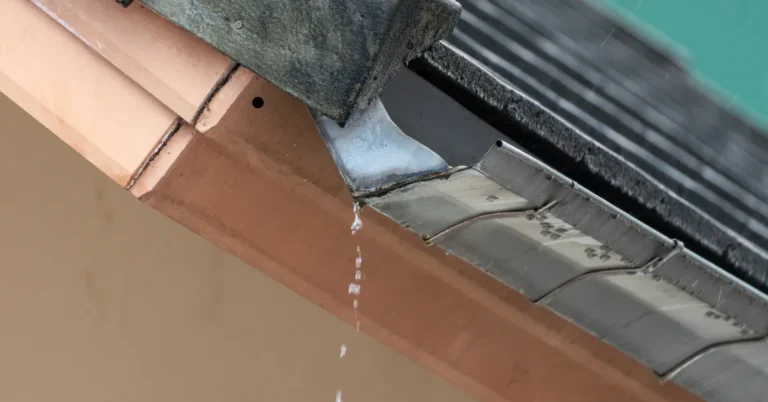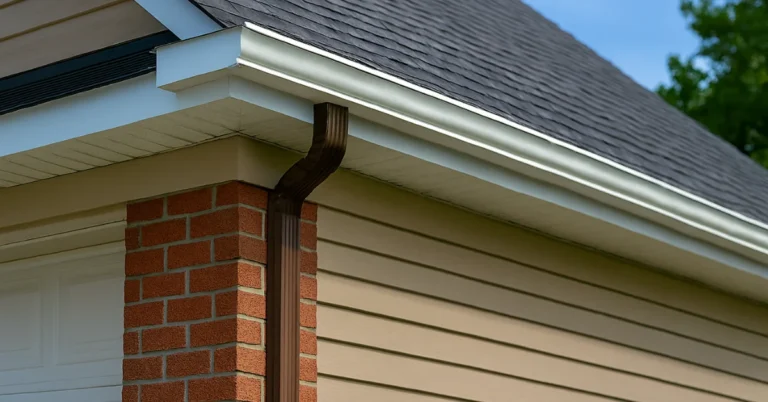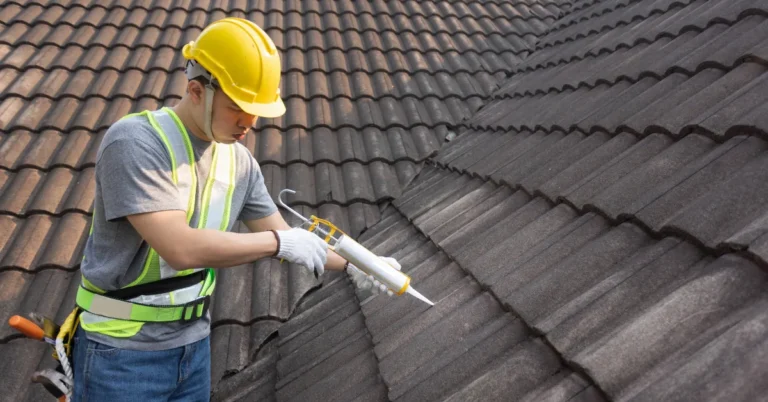A gutter clogged with leaves, twigs, and debris is more than a minor nuisance. Left unchecked, clogged gutters can cause serious water damage, weaken your roof, and even harm your home’s foundation. Many homeowners don’t notice the problem until it’s too late, but there are clear warning signs that your gutters need attention. Whether you’re considering hiring a gutter cleaning company or tackling it yourself, knowing the signs of gutter clogging issues can save you time, money, and stress.
7 Reasons of a Clogged Gutter Every Homeowner Should Know
A gutter clogged may seem like a small issue, but the damage it can cause to your roof, siding, and foundation can be serious. By learning the warning signs early, you can unclog gutters before they create costly repairs.
Water Overflow During Rainstorms
One of the most obvious signs of a gutter clogged is water spilling over the edges during heavy rain. Instead of being directed safely through the downspouts, the water cascades straight down like a waterfall. This might not seem like a big deal at first, but it creates several problems. Overflowing water can stain exterior walls, damage siding, wash away soil from landscaping, and collect near the foundation.
If left untreated, this constant overflow increases the risk of cracks in the foundation or water seeping into the basement. That’s why homeowners should regularly check their gutters during or after a storm. If water isn’t flowing smoothly, it’s a strong sign of clogged rain gutters that need cleaning.

Sagging or Pulling Gutters
A second sign I discovered was sagging gutters. One winter, my gutter clogged with wet leaves and ice became so heavy that it started pulling away from the roofline. From the ground, it looked like just a slight dip, but once I climbed up, I could see the brackets bending under the weight.
The scary part is that sagging doesn’t just make your gutters ineffective, it can tear into your fascia boards and even pull away chunks of your roof if ignored. In my case, I had to replace two brackets and reattach part of the gutter, which could have been avoided if I had cleaned them earlier. Anytime you see your gutters bowing or leaning, it’s a strong sign of clogged or broken gutters that need immediate attention before things get worse.
Plants Growing in the Gutters
When you start noticing weeds, moss, or even small plants sprouting from your gutters, it’s a clear sign of a gutter clogged for a long time. What happens is that leaves, dirt, and organic debris break down over time, creating a soil-like layer inside the gutter. With rainwater acting as a natural watering system, seeds carried by the wind or dropped by birds easily take root.
Not only do these plants block water flow even more, but they also add extra weight to the system. This increases the risk of sagging, rusting, or even cracked sections of the gutter. Seeing green growth along the roofline is one of the strongest indicators that clogs in gutters have built up and professional cleaning is urgently needed.
Water Stains on Walls or Siding
If you notice brown streaks, discoloration, or mold patches on your siding, chances are your gutter clogged is overflowing. Instead of directing rainwater through the downspouts, the blockage forces water to spill over the edge and run down your home’s exterior.
This constant water exposure can damage paint, weaken wood, and lead to mold growth that spreads over time. It not only makes your house look neglected but also lowers curb appeal and creates long-term repair costs. Water stains are one of the easiest gutter clogs signs to spot, and they should never be ignored because they indicate that water is escaping where it shouldn’t.
Pools of Water Around the Foundation
When a gutter clogged can no longer carry rainwater away, the water often spills straight down to the ground below. This creates puddles and soggy soil around the foundation of your home. While it may seem harmless at first, constant pooling weakens the soil and puts pressure on the foundation walls.
Over time, this can cause cracks, basement leaks, or even serious structural damage that is extremely costly to repair. The solution is simple compared to the problem it prevents: regular unclogging of blocked gutters ensures water is directed safely away from your property, protecting the base of your home for the long term.
Pests and Birds Nesting
Standing water inside clogged gutters quickly becomes a breeding ground for mosquitoes and insects. On top of that, the damp, debris-filled space is an inviting nesting spot for birds, squirrels, and other small animals. If you’ve noticed unusual pest activity near your roofline, it’s often a direct result of gutter clogging issues.
Not only does this create health risks and noise problems, but it also makes the clogs worse as animals bring in twigs, feathers, and other nesting material. By keeping your gutters clean, you reduce the chances of infestations and help ensure your gutters stay clog-free year-round.
Cracked or Damaged Gutters

When a gutter clogged is left untreated for too long, the weight of water, leaves, and debris begins to strain the system. This constant pressure can cause cracks, leaks, or even split sections in the gutters. Once damage reaches this stage, cleaning alone won’t solve the problem.
Cracked or broken gutters allow water to escape in the wrong places, often worsening the very issues you’re trying to avoid: like siding stains, foundation problems, and landscaping erosion. In many cases, a full replacement becomes necessary, which is far more expensive than regular cleaning. If you notice visible cracks or rust spots, it’s a clear warning that clogs in gutters have been ignored for too long.
DIY Gutter Cleaning vs Hiring a Gutter Cleaning Company
When dealing with a gutter clogged, many homeowners consider tackling the job themselves. DIY gutter cleaning can save money in the short term, but it comes with risks. Climbing ladders, handling wet debris, and working around the roofline can be dangerous, especially if you don’t have the right tools or experience. It’s also easy to miss hidden problems like small cracks, rust spots, or misaligned gutters.
On the other hand, hiring a professional gutter cleaning company offers long-term peace of mind. Experts not only remove debris but also inspect the entire system for damage, ensuring your gutters are fully functional. They can spot early warning signs that most homeowners overlook, preventing costly repairs later. For safety, efficiency, and lasting results, professional cleaning is often the smarter choice to keep your gutters clog-free throughout the year.
Conclusion
A gutter clogged is never just a minor issue, it’s a clear warning that your home could face water damage, foundation cracks, pest infestations, and even roof problems if ignored. The good news is that these risks are preventable. By paying attention to the early signs of gutter clogs and acting quickly, you can avoid costly repairs.
Whether you choose DIY gutter cleaning or hire a professional gutter cleaning company, the goal is the same: keeping your gutters clog-free and your home fully protected. Regular maintenance and inspections are the easiest ways to stay ahead of gutter clogging issues and ensure long-term peace of mind.
FAQs
How do you unclog gutters safely?
To unclog gutters safely, use a stable ladder with ladder stabilizers. Wear gloves to scoop out debris and flush the system with a garden hose. For stubborn blockages, use a plumber’s snake or call a gutter cleaning company to avoid injury.
How to keep gutters from clogging?
You can keep your gutters clog-free by cleaning them twice a year, trimming nearby trees, and installing gutter guards. Regular inspections also prevent small clogs from turning into major gutter clogging issues.
What happens if you don’t clean clogged gutters?
If you ignore a gutter clogged with leaves and debris, water will overflow and damage your roof, siding, and foundation. It can also attract pests, lead to basement leaks, and result in clogged or broken gutters that require replacement.
How often should you clean gutters?
Most experts recommend cleaning gutters at least twice a year — once in spring and once in fall. If you live in a wooded area or experience heavy storms, you may need to unclog gutters more frequently.
Are gutter guards worth it?
Gutter guards help reduce clogs in gutters by blocking leaves and large debris. While they don’t eliminate the need for cleaning completely, they make maintenance easier and help keep clogged rain gutters under control.
Can I do DIY gutter cleaning, or should I hire a pro?
DIYing gutter clogs is possible with the right tools, but it can be risky and time-consuming. A professional gutter cleaning company not only clears debris but also inspects for cracks, rust, and misalignment, giving you longer-lasting results.
How do you know if your gutters are clogged?
Signs of a gutter clogged include water overflowing during rain, sagging gutters, plants growing inside, water stains on walls, and pools of water around the foundation. Spotting these early helps you unclog gutters before damage occurs.




